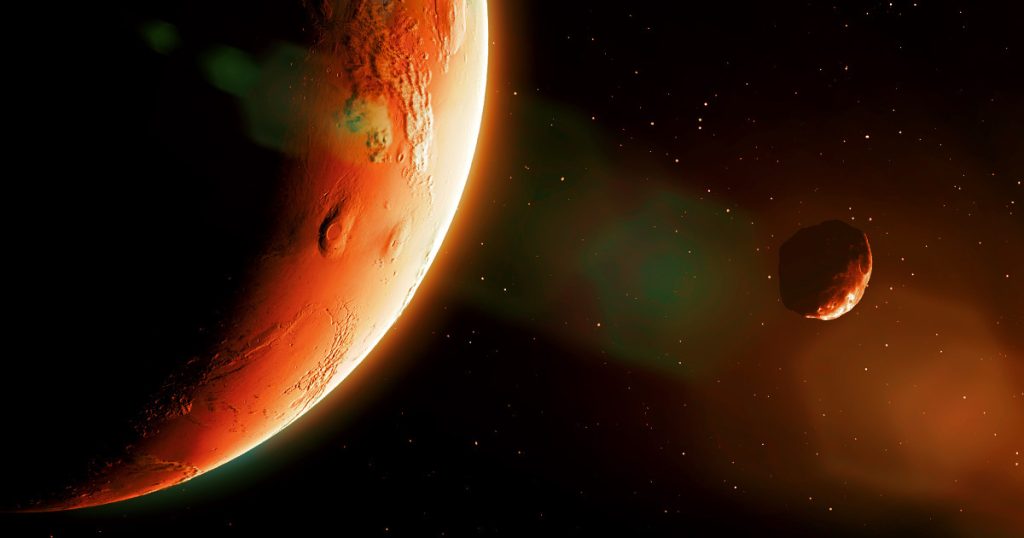
Mars Appears to Be Missing a Moon, Astronomer Finds (Image Credit: futurism-com)
But where the heck is it?
Battle of the Bulge
Mars is not a uniform sphere, but instead has a wonky shape due to its width, length and height all having different measurements, making it triaxial in nature. This weird feature, along with its strange topographic bulges and the highest peaks and the deepest crevasses in the Solar System, represent a planetary puzzle. And they could also, according to US Naval Observatory astronomer Michael Efroimsky, be tangible evidence that the red planet once had a large moon that somehow escaped.
In a yet-to-be-peer-reviewed paper, Efroimsky points to Mars’ vast bulge near the planet’s equator called Tharsis, which boasts three of the largest volcanoes in the Solar System. Past research has hypothesized that lava flows or other internal forces were responsible for the bulge’s formation.
But there’s other research that suggests that taking away this region from Mars wouldn’t change the planet’s triaxial shape, which led to Efroimsky to suspect that perhaps a long-lost moon, which he’s dubbed Nerio, was responsible for the formation of this bulge during Mar’s very early history when the planet hadn’t yet solidified.
Through a series of calculations, Efroimsky demonstrates that if Nerio did exist and was at least a third of a size of our own Moon, it could have exerted enough force to create the bulge, which then encouraged the formation of volcanoes on the planet and other distinctive topographical features.
Eventually, the planet would have cooled and solidified, and the bulge remained as a permanent feature on the Martian surface.
Mystery Moon
But what happened to this long-lost moon?
Efroimsky has one interesting theory: something smashed into Nerio, and all we have left as remnants are the Martian moons of today, Phobos and Deimos, which are relatively small and lumpy.
And yet this all educated conjecture, and the only way to prove Efroimsky’s theory would be with more Martian data.
There are already several active missions to plumb the mysteries of Mars, from how it lost its early atmosphere to whether there’s water hidden in the dusty rocks of the Red Planet.
Perhaps more will be uncovered when Japan launches its Martian Moons eXploration mission in 2026, with the goal of studying Phobos and Deimos — and even collecting samples from Phobos before returning them back to Earth for further research.
Any data from this project and additional findings from other missions may go a long way in answering questions Efroimsky has brought up in his paper and then some, bringing us closer to understanding our planetary neighbor.
More on Mars: Scientists Discover Massive Reservoir of Water Hiding on Mars





